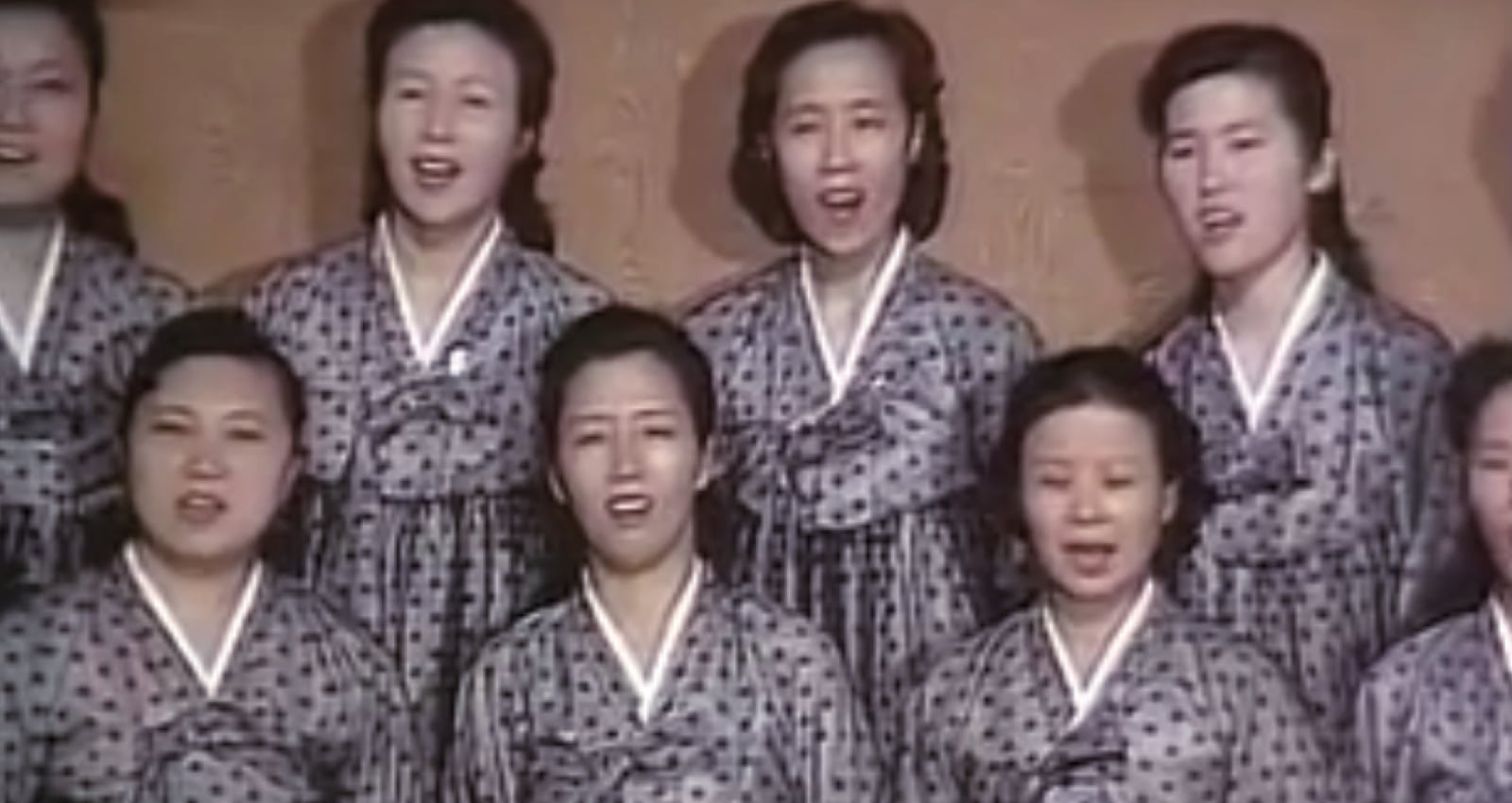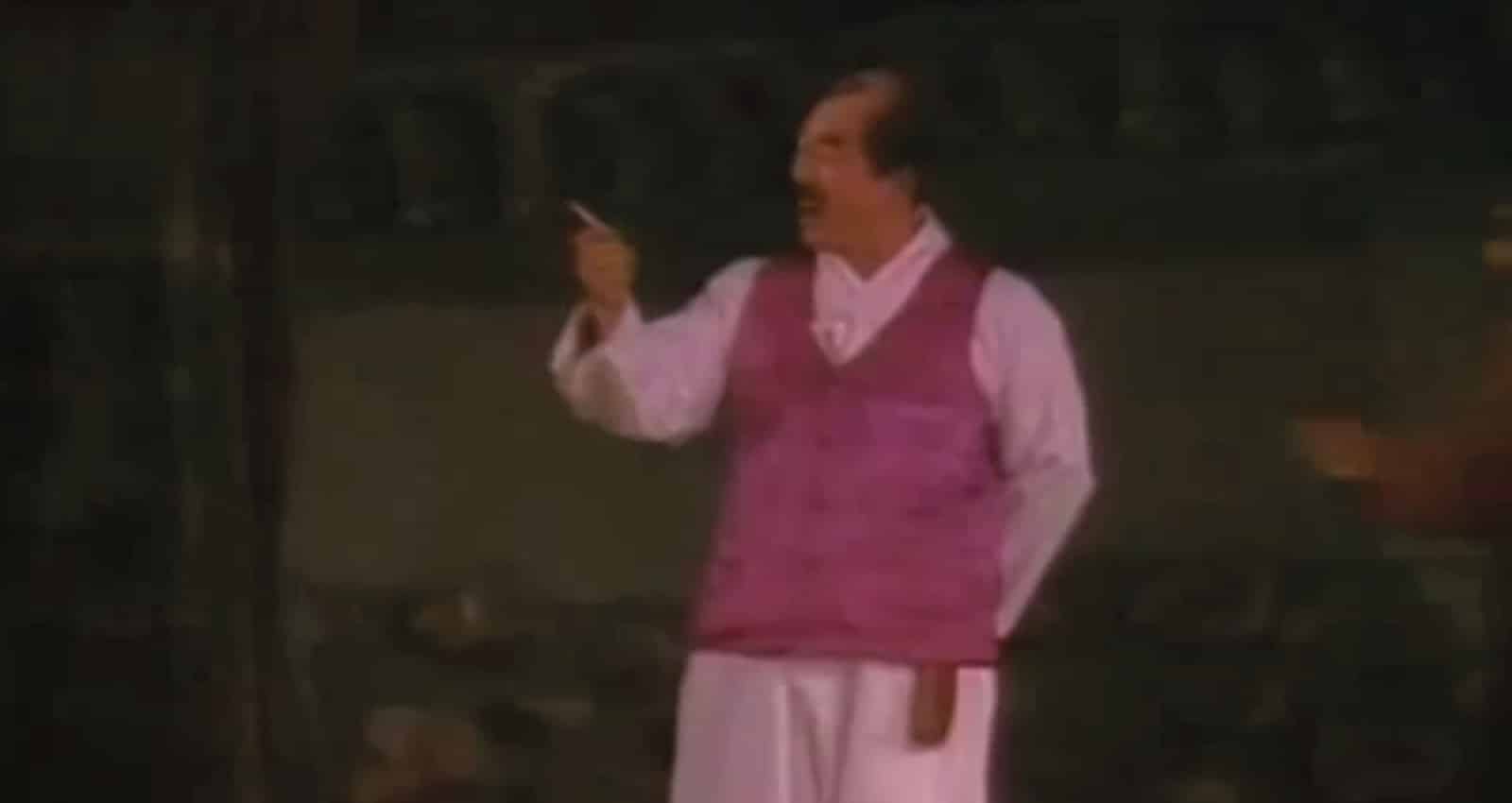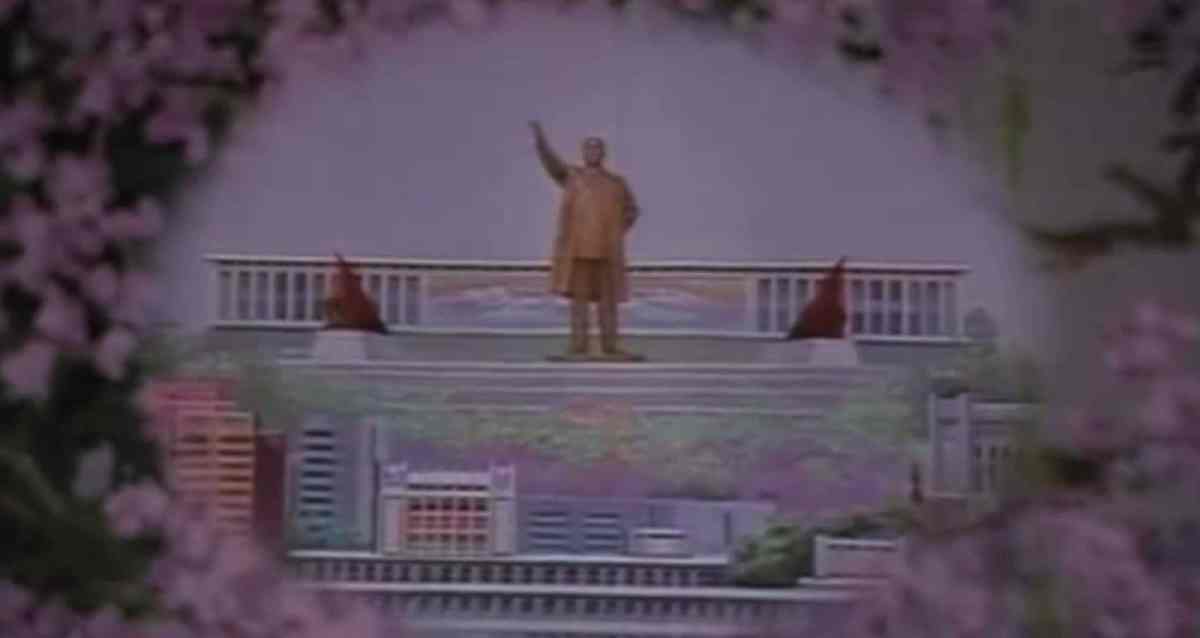Kim Jong-il, the late Dear Leader of the People’s Republic of Korea, wrote six operas in two years. Not only that: according to one version of his official biography, they are all “better than any in the history of music.” Even accounting for the immodesty of dictators, this claim is unusual. Most despots see themselves as military heroes and saviors of their people; Kim also wanted to be known as, of all things, a composer of operas.
Let’s back up a little, though: it would be pretty naïve to simply believe the party line. How do we know that Kim Jong-il really wrote the operas? If he didn’t, who did? Setting aside the question of whether they are better than all operas, are the pieces any good?
Classical music outlets that picked up on the story were not amused by the composing dictator, and their tone was mostly derisive. Still, Kim’s biography raises some interesting questions. Why would an autocrat want (or need) to be considered an important composer of music theater? Do the operas serve a political purpose? If so, do they—can opera—succeed in shoring up support, in changing hearts and minds?
While researching this article, I listened to three North Korean operas purportedly written by Kim Jong-il: “Sea of Blood,” “A True Daughter of the Party,” and “The Flower Girl.” All three are readily available on YouTube. Although three more operas exist, I decided, in the interests of brevity and my own sanity, to limit the scope of this article to these works. The total duration of the operas I saw was eight hours, 30 minutes, and 20 seconds; there were 20 acts.
Besides my own listening, background information for this article was taken from Keith Howard’s article “Dancing for the Eternal President” and Paul French’s insightful history, North Korea: State of Paranoia.
Kim Jong-il was born in the winter of 1942 in Vyatskoye, Russia. He spent part of his childhood there, moved to Pyongyang after World War II, spent the the Korean War in Manchuria, and then finally settled down in North Korea’s capital for a prestigious education. This included music: French recounts that Kim “was said to play the violin and piano…Cho Myung-chul, a defector who knew Kim from childhood, described him as a fine pianist…”
Although this doesn’t necessarily mean that Kim was able to compose or orchestrate, he was likely able to read music and may have had at least a modest understanding of music theory. When he was 29, “his” first opera appeared: “Sea of Blood” was based on a text by his father and predecessor Kim Il-sung, and tells the story of a Korean mining village’s heroic resistance to Japanese oppression. Kim Jong-il was already being groomed to take over the North Korean leadership at this time, but Howard makes the argument that he was assigned various artistic and cultural duties to prevent him from becoming restless and coveting his father’s ultimate power. Kim Jong-il clearly took to this work. He wrote treatises on opera (On the Art of Opera), film, and theater, and took a hands-on approach to artistic production, visiting artists and dispensing on-the-spot aesthetic and ideological advice. Kim’s taste fused with the regime’s politics, creating the genre called revolutionary opera.

North Korean revolutionary opera has some stylistic elements that make it easily recognizable. For one, it’s extremely repetitive. It contains an awkward mishmash of styles. Transitions between musical phrases are, almost exclusively, simple major and minor scales. There are many waltzes. Songs are accompanied by pizzicato strings à la Donizetti. Facial hair is destiny: clean-shaven men are heroic; men with mustaches are evil; men with chin beards always seem like they’re imparting folksy wisdom. Women often suffer for the majority of the opera, and rarely seem to have much agency; they wail and moan and wear beautiful dresses. The film versions make liberal use of 1970s-style split-screen effects. Every opera has a dream scene with high flutes. There is hardly any vocal counterpoint—singers sing in unison, in octaves, or they take turns.
I start my listening with “Sea of Blood,” as it’s the best-known North Korean opera, and even gets performed outside the country sometimes. It also turns out to be the most bearable work of the three. There is one moment of vocal counterpoint, between a female singer and the female chorus, and it’s brief but revelatory. Otherwise, the music is mostly dull and the story melodramatic, but the Japanese commander’s vulgar songs have some rhythmic flair, there’s decent orchestration, and the climaxes pack a punch. There’s a single leitmotif, a minor second tremolo – like Jaws without the buildup – that lets the audience know when the bad guys are coming. Even without this extra help, it’s easy to know who to root for: the Japanese are always slouching, and they carry rifles with bayonets; the Koreans are good-looking, they stand straight and tall, and fight with their bare hands (except at the end, when a grandma shoots several Japanese soldiers with a pistol). Perversely, the music’s most exciting climaxes are when the villagers are about to suffer some atrocity.
There is more than one official biography of Kim Jong-il, and another, from the government website of the Democratic People’s Republic, describes the origins of the revolutionary operas differently. Instead of having written the operas, he “led” their creation, “saw that” they “were created,” gave guidance, chose songs. This is probably more accurate than the first version; here Kim comes off as a manager rather than a composer of the operas, a kind of hyper-involved artistic director. He may even have contributed the idea of offstage choirs. While a composer-as-manager doesn’t correspond to our Western idea of a musical genius toiling alone or at most feuding with his librettist, it does have a strong basis in North Korean society. Artistic creation did and does function by committee; Kim worked with a “collective” of artists. The “principle of collectivism” is enshrined in Article 63 of the North Korean constitution. Society honors the collective above the individual, and this applies to the arts as much as to the economy or the military.
There are some clues as to who was responsible for the actual composition of the operas: a composer named Kim Won-gyun, who attended music school in Japan and wrote several patriotic songs, probably played an essential role. The Conservatory in Pyongyang now bears his name. But that may be somewhat beside the point. These operas are unmistakably products of North Korea’s political environment; they represent its values and its sense of self, and they show signs of detailed input from a dictator. Kim Jong-il created an environment in which artistic production was so controlled that only these kind of operas could be produced. In that sense, they really are by him.
Since I watched it, the full version of “A True Daughter of the Party” seems to have disappeared from YouTube.
“A True Daughter of the Party” was the most fun opera visually. The chorus, orchestra, and conductor are all decked out in generals’ uniforms—they look like they’re ready to be photographed for a newspaper headline about tensions on the Korean Peninsula. The way they sing in the bottom half of the split-screen while the True Daughter cares for a wounded soldier in the upper half of the frame is awesome kitsch. Several soldiers die dramatic deaths in the first six minutes. The music is less exciting, but there are moments of relief: the combination of oboe doubled with flute an octave higher is a nice touch in the orchestration, and soldiers laugh and joke around with each other, an hour and a half in, making me smile. I write three times in my notes that the music is repetitive.
At the opera’s climax, Pyongyang and the statue of Kim Il-sung appear on a video screen behind the stage. It’s easy to laugh, but the work is deadly serious. I thrill slightly at the evil of it.
But “The Flower Girl” is far more brutal. It’s the story of a girl and the misfortunes inflicted on her by the rich. As a child (she looks about 11), she plays with something that belongs to the feudal lord of her village—his wife sees her and pushes her into a stove, blinding her for life. Later she sells flowers and is endlessly ignored and condescended to. The music has a habit of breaking off dramatically, then coming in after the pause with the same banal melody as before. The sad songs are accompanied by endless string arpeggios. The main character is a punching bag, and I swear at my computer screen, telling her to finally stand up for herself.
About 10 minutes from the end of this three-hour opera, the first good thing happens: the Flower Girl finds her missing father and he gets his revenge against the evil feudal family. By emphasizing the suffering in the story to the extent that the eventual triumph is negligible, the drama fetishizes victimhood.

It may seem pedantic to point this out, but North Korean opera is, musically and dramatically, terrible. It was a battle to watch the operas all the way through. What’s worth exploring is the genre’s role in Kim Jong-il’s cult of personality, in North Korean society and as propaganda.
Kim Jong-il’s desire to be known as an opera composer may simply show that he liked opera. He tried to reconcile the regime’s socialist ideology with opera’s history and reputation as a bourgeois art form; I doubt he would have made the effort if he didn’t have a passion for it. Of course, he gained access to Western music through his elite education—a privilege not available to the peasants and workers the operas are ostensibly meant to celebrate.
Unlike, say, the paintings of George W. Bush, which were made after the president had left power, Kim Jong-il’s operas had a political function. Kim Jong-il was preparing to be named as his father’s successor, and while the production of operas wasn’t the most important part of his training, it was an excellent opportunity for him to show his adherence to his father’s ideology. Any success the dramas had in securing political support would have added further to his burgeoning cult of personality.
I personally watched the North Korean operas from a great cultural distance. Still, there were moments that, I’m ashamed to admit, gave me goose bumps. It was so easy to identify with the Korean characters and hate their enemies, and I found myself genuinely rooting for the good guys and hating the bad guys. Perspective came back to me when the music got boring and the message got hectoring, which was often. The operas failed to convince me, due to their lack of artistic quality.
Yet I can only imagine the impact of these dramas on a North Korean audience that believes in the ideology of its leaders and remembers viscerally the ravages of the 20th century. They glorify and flatter their viewers, one-dimensionally but effectively. I’m sure that this combination of music and theater has the capacity to stir patriotic fervor and even hatred. Derision might not be the right way to approach Kim Jong-il’s operas. Yes, they’re bad—but they’re scary, too. ¶


